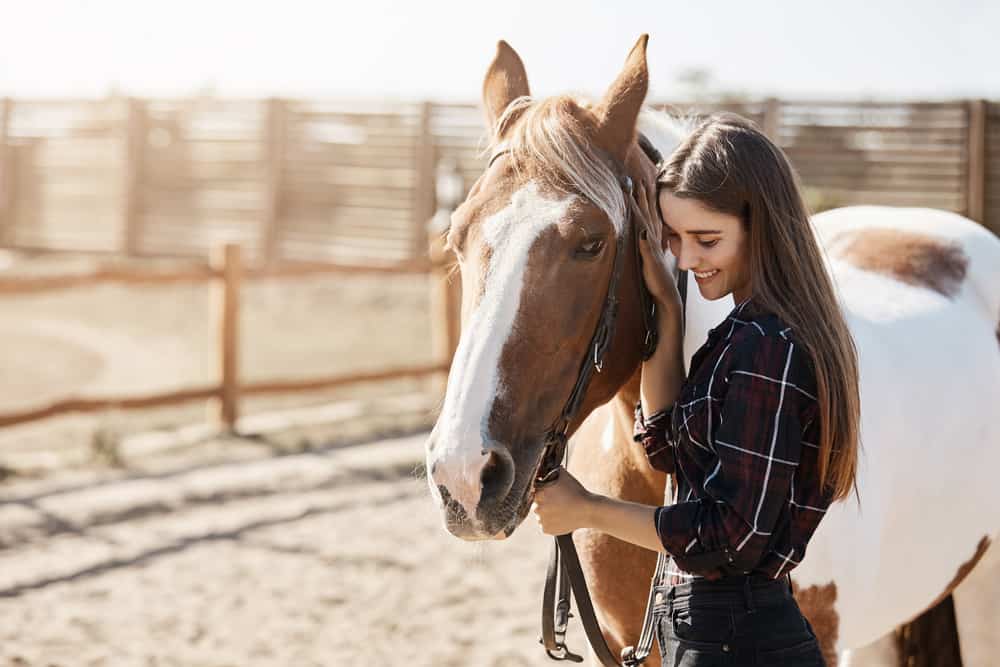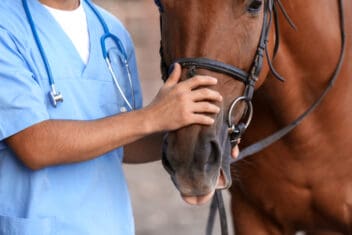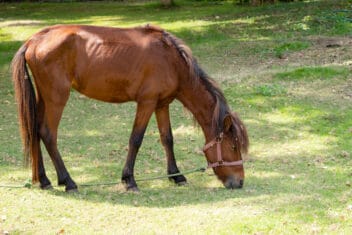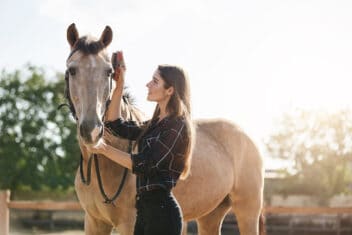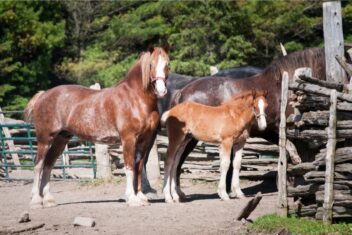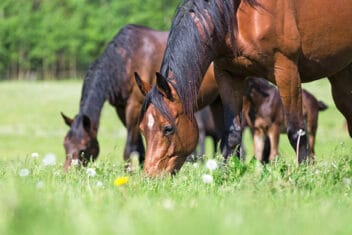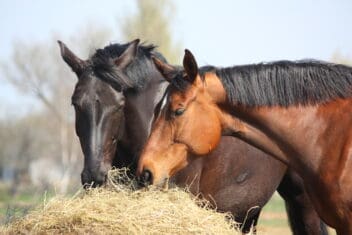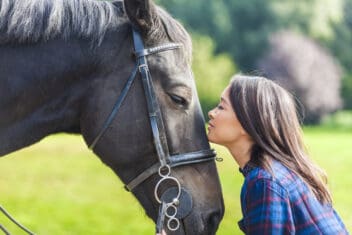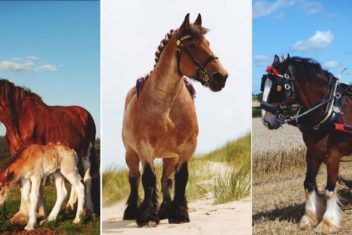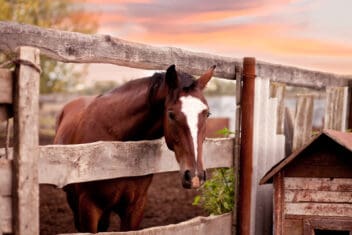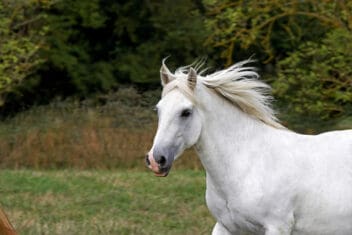It’s easy to be focused on the physical aspects of horse care, such as feeding and housing them. But building trust and staying safe around your horse is incredibly important, as well.
The absolutely most important thing you need to know about horse care is the importance of interconnectedness between horse and caregiver or rider.
In order to build trust and stay safe when around your equine pal, there are a few things you need to keep in mind. If you practice consistently, pay attention to your horse and environment, and learn to understand your horse’s emotional needs, you can achieve a healthy relationship. Here’s what to know:
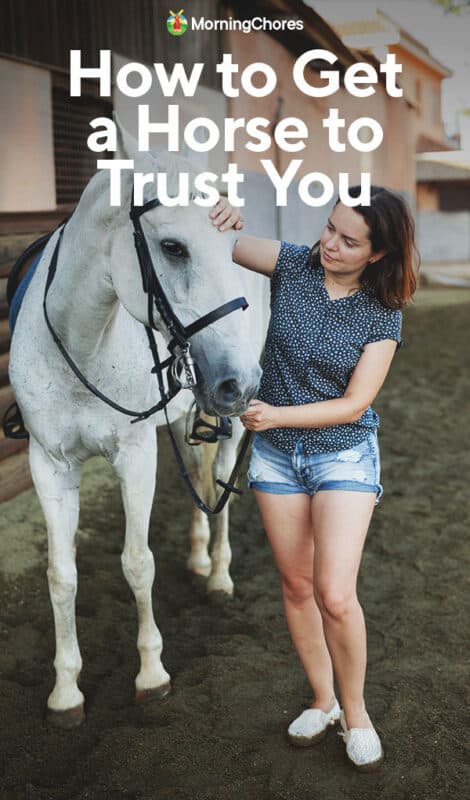
1. Check Your Horse’s Mood (and Your Own)
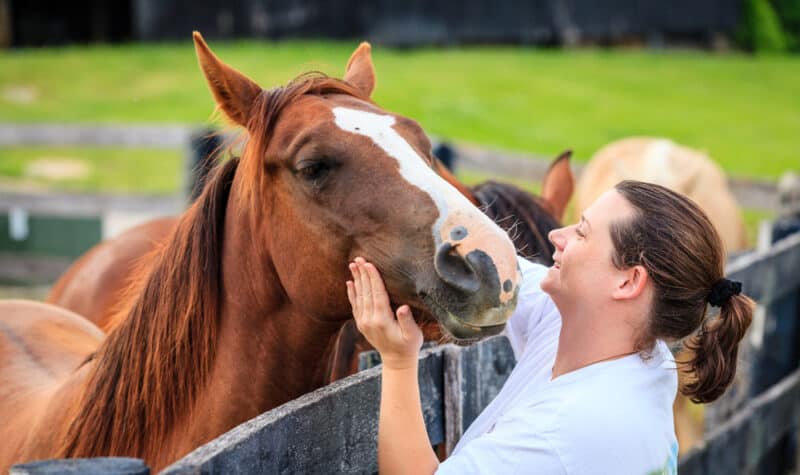
Always check your mood and attitude before you interact with your horse.
You might wake up in a bad mood one day and fail to see something that you would otherwise have recognized. For example, you might not notice what kind of mood the horse is in before you engage with him on that particular day. That can trigger a cascade effect and someone might get hurt. Or you could overlook a health issue because you’re preoccupied.
Big problems can often be prevented just by simple observation. Check-in with yourself to see how you’re feeling so you can pay better attention to the health and mental state of your charge.
The horse will also react to your mood. After all, the comparison between horses and the sea is not an accidental one: they are literally an ocean of emotion. Your bad temper or off mood will be reflected in how the horse behaves.
Klaus Ferdinand Hempfling has a vast knowledge of horse behavior. He has written several books and has a lot of great advice and insights into both horse and rider behavior and interconnectedness if you’re looking for more information on how to build trust and how you and your horse’s moods are intertwined.
2. Remember Your Horse’s Essential Nature

I’ve lost count of the times that I’ve heard someone say “Well, I’ve never seen a horse do that before!” This is because they’re working on the assumption that things are going to be the same day in day out. Or that the horse is a reliable, dependable machine or tool that will behave the same way every time they take it out of the garage.
Bear in mind what these animals were doing before we stuck them into little boxes, wheeling them out for a few hours a day with saddles strapped to their backs. These are creatures of the plains; they are made to cover vast distances, always moving, and not be anchored to a particular spot for their entire lives.
“The horses of the deserts and steppes—although thirstier than their Western cousins—are far freer and happier than the latter.” – wise words from an elder Arab horse master I once met.
Additionally, if you’ve ever heard of the term “horseplay,” remember that horses can be exceptionally rough and tumble with one another. They’re energetic and often fight hoof and tooth with one another.
We’re more accustomed to their docile, subservient nature, but that’s not what they’re really like inside. One accidental blow from one of these extraordinary animals is very capable of killing an adult human, let alone a child.
Building trust with your horse can help keep you safe to a certain degree, but never forget horses don’t think like humans.
3. Reading Body Language
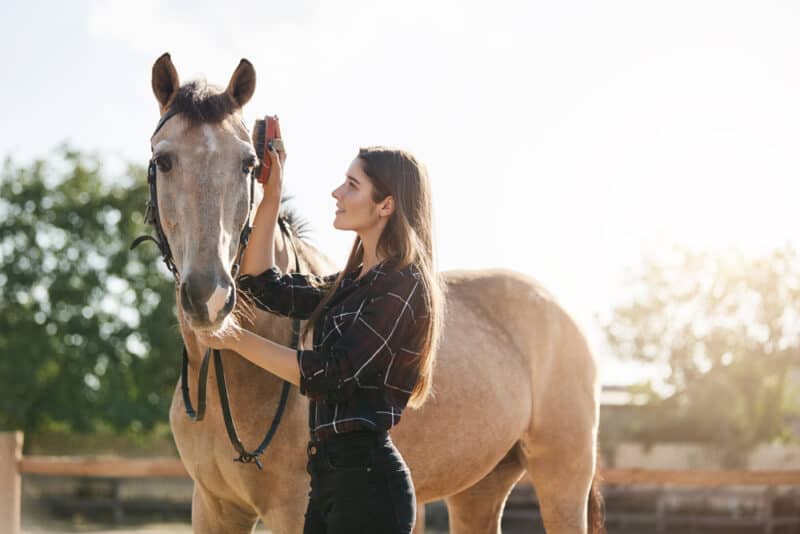
It’s inevitable that you’ll have to shift the horse around at some point, whether you’re putting tack on it or moving it from the barn to the pen, etc.
When you approach the horse, do so with gentle, soft energy. Most horses aren’t particularly fond of hard eye contact, so walk up with a straight, strong posture, but gentle energy. This may sound a bit vague, but it’s about finding the right attitude and posture. Horses are extremely sensitive to that sort of thing.
Make noises that are appropriate to the situation you’re in, as well as the horse’s general demeanor.
If the horse seems to be agitated or scared, then approach it with gently “tsk” sounds and soothing noises. Speak gently to it, say its name softly a few times so you don’t spook it. The more trust you building between you and your horse, the easier it will be to calm it when it’s uncertain.
If you’re next to the horse, then taking deep breaths and soft gestures like you’re stretching and relaxing your body- in as sincere a manner as possible – is ideal for reassuring the horse. To begin with, this is a little bit like juggling: you’re both actively reassuring and guiding the horse’s mind and body, as well as paying attention to where his feet are.
4. Pay Attention To Your Environment

At the same time, you’re paying attention to the surrounding area and what you’re doing. For example, you might be putting the saddle on or moving the horse to a different area while ensuring that everyone around the horse is safe. You should also be sure that the horse is safe from other people and animals that may be around.
When standing next to the horse, observe its body language around you and others. Horses, like every other mammal, need to know their boundaries. And if they are unsure, they will push. Pay close attention to their subtle movements.
For instance, if a horse takes a tiny step towards you it’s more than likely to take a much bigger step into your space soon. It’s pushing boundaries and trying to assert dominance. Don’t let them. Push back and claim your space.
If you want to have a healthy working relationship with the horse, you must nip that in the bud. Position yourself in front of the horse at an angle, with your weight on the front leg. This way, if the horse advances suddenly, you can pivot with your back leg to get out of the way quickly.
While in front of it, knuckle up your first and middle finger and push directly into the horse’s sternum: this is the center bone of the chest where the pectoral muscles meet. Gently but firmly, exert pressure forward into this spot with your knuckles as you walk towards the horse. This will make the horse walk backward and will reaffirm the boundary. You’re in charge here: not the horse.
5. Protect Yourself From Injury
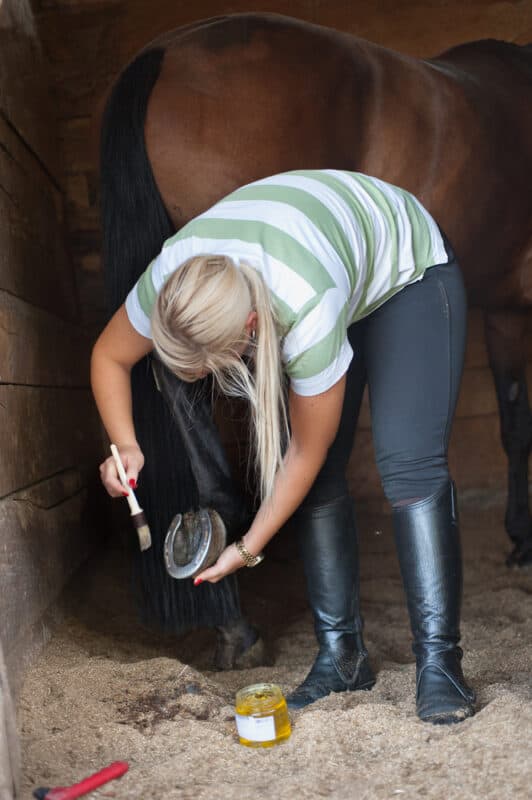
This should seem obvious but NEVER startle a horse, particularly from behind. A rear kick is quite capable of disabling or killing a human.
Also, when handling a horse from the front – particularly hot-blooded horses which are usually more erratic and sharp-tempered – pay attention to their mouths and forelegs. Agitated horses can bite you, or stamp on you with their front hooves.
If you’re mucking out the stalls and not planning on riding the horse, and you have to muck out around the horse while it’s stable (which is HIGHLY inadvisable), be sure to wear steel-capped boots. This significantly lessens the chance of you ending up with broken toes, which take ages to heal. Trust me.
Being stepped on by a horse can be shocking and scary. More than one person has lashed out in pain and it damaged the relationship between the horse and the person. It may seem unrelated, but avoiding injury really does help build trust between you and your horse.
You should also avoid injuring your horse. When you ask your horse to enter a trailer or back up, make sure it is safe for them to do so. If you were to ask your horse to enter a situation and they go hurt, it would damage the bond and trust between you.
6. Be Consistent
Both you and your horse will make mistakes. That’s part of life. But in order to build trust with your horse, you need to assure your equine companion that they can rely on you to be consistent. If your horse isn’t sure if you’ll be angry at a mistake one day and understanding and encouraging the next, they won’t be able to trust you.
Horses are creatures of habit and they will feel safe and know what to expect if you set consistent expectations. Your horse won’t understand if you’re having a bad day and that’s why you became upset when they wouldn’t respond to your aid correctly. All they know is that you can’t be trusted to be a consistent leader.
7. Spend Time Together
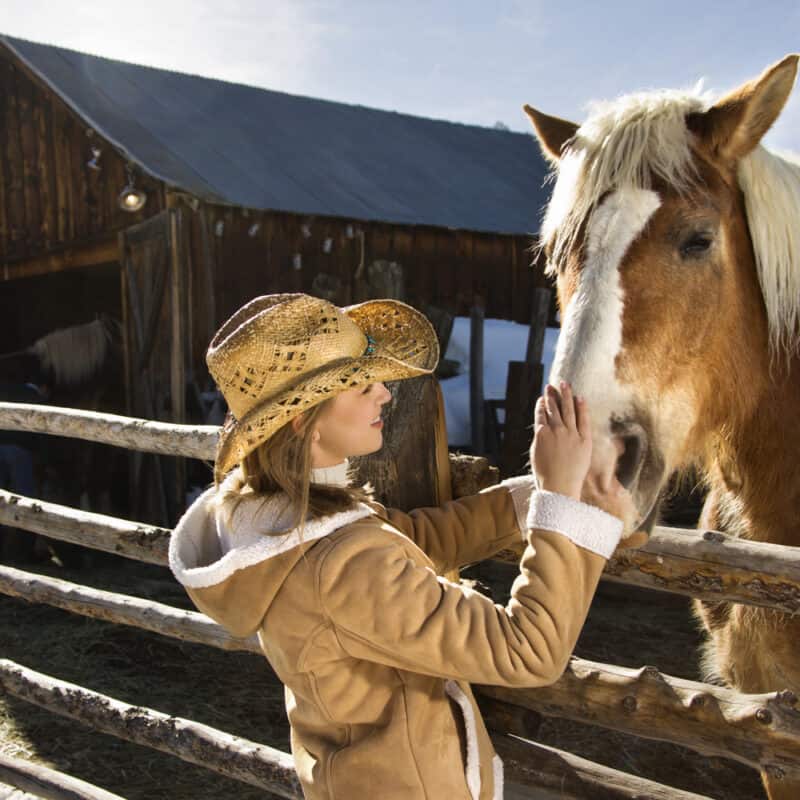
It doesn’t matter if you’re riding or just hanging out around the barn, spending time with your horse is key to building a good relationship. Horses live in herds and they don’t naturally trust animals (including humans) that aren’t a part of their herd.
Part of the path to becoming part of their trusted inner circle is simply being around.
While you’re there, you can stroke your horse, give them a treat, or just sit nearby and read a book. The more you’re around, the better off you and your horse’s relationship will be and the more your horse will trust you.
What Not To Do
- Never yell at your horse.
- Don’t use the bit to force good behavior.
- Never strike your horse in anger.
- Never force a horse to stay in a situation where they’re terrified.
- Don’t ignore bad behavior. Address it right away.
- Be aware of where you are guiding your horse. Never push them into a dangerous or uncomfortable place.
- Never punish your horse for something you asked them to do.
